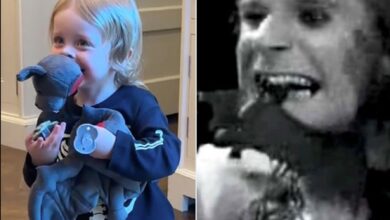The Hollies’ ‘Carrie Anne’ Captures 1967’s Spirit of Pop Innovation and Expands the Sound of British Rock
Released in May 1967, “Carrie Anne” by The Hollies arrived at a time when pop music was undergoing rapid evolution—and it fit the moment perfectly. Bursting with radiant vocal harmonies, melodic charm, and a surprising steel drum solo, the song represented both a nod to the group’s Merseybeat roots and a bold step into new musical territory. It quickly climbed the UK Singles Chart, peaking at No. 3, and became a hit across Europe and in North America, where it reached No. 9 on the Billboard Hot 100. More than just another catchy single, “Carrie Anne” became a landmark for the band’s sound and a symbol of 1967’s creative pop explosion.
The Hollies, formed in Manchester in the early 1960s, had steadily built a reputation for their infectious vocal interplay and crisp songwriting. Fronted by Allan Clarke, with Graham Nash and Tony Hicks providing vocal and instrumental brilliance, the group stood out from other British Invasion acts with their polished harmonies and bright arrangements. They had already scored several hits by the time “Carrie Anne” was released, including “Bus Stop” and “Look Through Any Window,” but this new single showcased their ability to balance commercial appeal with artistic growth.
According to band members, “Carrie Anne” was inspired by a real woman—though her true identity has been long debated. Some fans have speculated it was a coded tribute to Marianne Faithfull, while others believe it simply reflected a common coming-of-age story, portraying a woman admired from afar. Written by Clarke, Nash, and Hicks during a tour, the song cleverly disguised adolescent longing with poetic subtlety, making it feel both playful and emotionally authentic. Its lyrics—“You’re no good for me, but free of you, I’ll never be”—captured the internal tug-of-war that defined many youthful romances.
The production of “Carrie Anne” was handled by Ron Richards, who had worked closely with The Hollies since their early days. The recording took place at EMI’s Abbey Road Studios, and the session yielded one of the most memorable instrumental moments in 1960s pop: a steel drum solo in the bridge. This Caribbean flavor, highly unconventional in British pop at the time, added a whimsical, summery texture that surprised listeners and helped the track stand apart. Coupled with the band’s flawless vocal layering and jangly guitar lines, the result was both sonically adventurous and instantly accessible.
“Carrie Anne” received glowing reviews upon release, with critics praising its melodic sophistication and production innovation. The single sold strongly in both the UK and the US, earning The Hollies further recognition on the international stage. In an era crowded with groundbreaking releases—from Sgt. Pepper’s Lonely Hearts Club Band to The Doors’ debut—the song still managed to carve out its place thanks to its freshness and charm. It became a radio favorite, proving that harmony-driven pop still had a seat at the psychedelic table.
Culturally, the song marked a moment when British pop began to expand beyond traditional rock and roll formulas. Its flirtation with exotic instrumentation and softer emotional themes reflected a growing openness to blending genres and sounds. While it didn’t carry the radical edge of some of the era’s countercultural anthems, “Carrie Anne” helped make experimental pop more palatable for mainstream audiences, broadening the palette of acceptable sounds in top 40 radio.
For The Hollies, “Carrie Anne” was a defining moment. It showed they could stay relevant as the music landscape shifted and still remain true to their melodic roots. The song opened new doors, leading to international tours, television appearances, and greater interest in their evolving songwriting approach. Graham Nash, in particular, gained confidence from the song’s success, which later influenced his decision to pursue more ambitious material—and eventually to leave the band for Crosby, Stills & Nash.
Within the broader genre, “Carrie Anne” exerted quiet influence. It validated the idea that pop songs could embrace complexity and still be radio hits. Its success encouraged other groups—especially harmony-rich acts like The Bee Gees and The Turtles—to experiment with arrangement and texture while staying lyrically light. Even The Beach Boys, already known for their own vocal layers, would acknowledge the harmonic finesse of British contemporaries like The Hollies.
Numerous artists have paid homage to “Carrie Anne” in various forms, including covers by alternative and folk artists who gravitated toward its breezy charm. Though no cover has eclipsed the original’s popularity, its core elements—wistful lyrics, layered vocals, and unexpected instrumentation—remain appealing to musicians drawn to the melodic pop tradition.
When “Carrie Anne” hit the charts, The Hollies were already undergoing internal change. Graham Nash had grown increasingly interested in pushing lyrical and sonic boundaries. While “Carrie Anne” was still firmly rooted in the group’s classic style, it hinted at the creative tension brewing beneath the surface—tension that would eventually lead to his departure. But at the time of its release, the song served as a harmonious high point for the band’s classic lineup.
Decades later, “Carrie Anne” continues to receive regular airplay and remains a favorite on classic pop and British Invasion compilations. Its timeless feel, built on equal parts innocence and innovation, helps it resonate across generations. For many listeners, it evokes a golden moment of 1960s optimism and musical possibility.
The song also helped pave the way for more adventurous production in pop without alienating mainstream audiences. By incorporating the steel drum and delivering such crisp vocal harmonies, The Hollies subtly redefined what a pop single could sound like. It demonstrated that experimentation didn’t have to mean abandoning melody—it could, in fact, enhance it.
Though The Hollies never received quite the same cultural reverence as The Beatles or The Rolling Stones, songs like “Carrie Anne” cemented their status as craftsmen of sophisticated, memorable pop. Their influence on the sound of 1960s and early 1970s radio was substantial, and “Carrie Anne” stands as one of their brightest achievements.
Ultimately, “Carrie Anne” remains a radiant gem in The Hollies’ catalog—a song that balances innovation and simplicity, playfulness and precision. It serves not only as a testament to the band’s skill but also as a shining example of how pop music can evolve without losing its heart. More than fifty years on, its melody still lingers, its charm still fresh, its legacy still secure.





